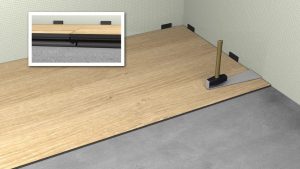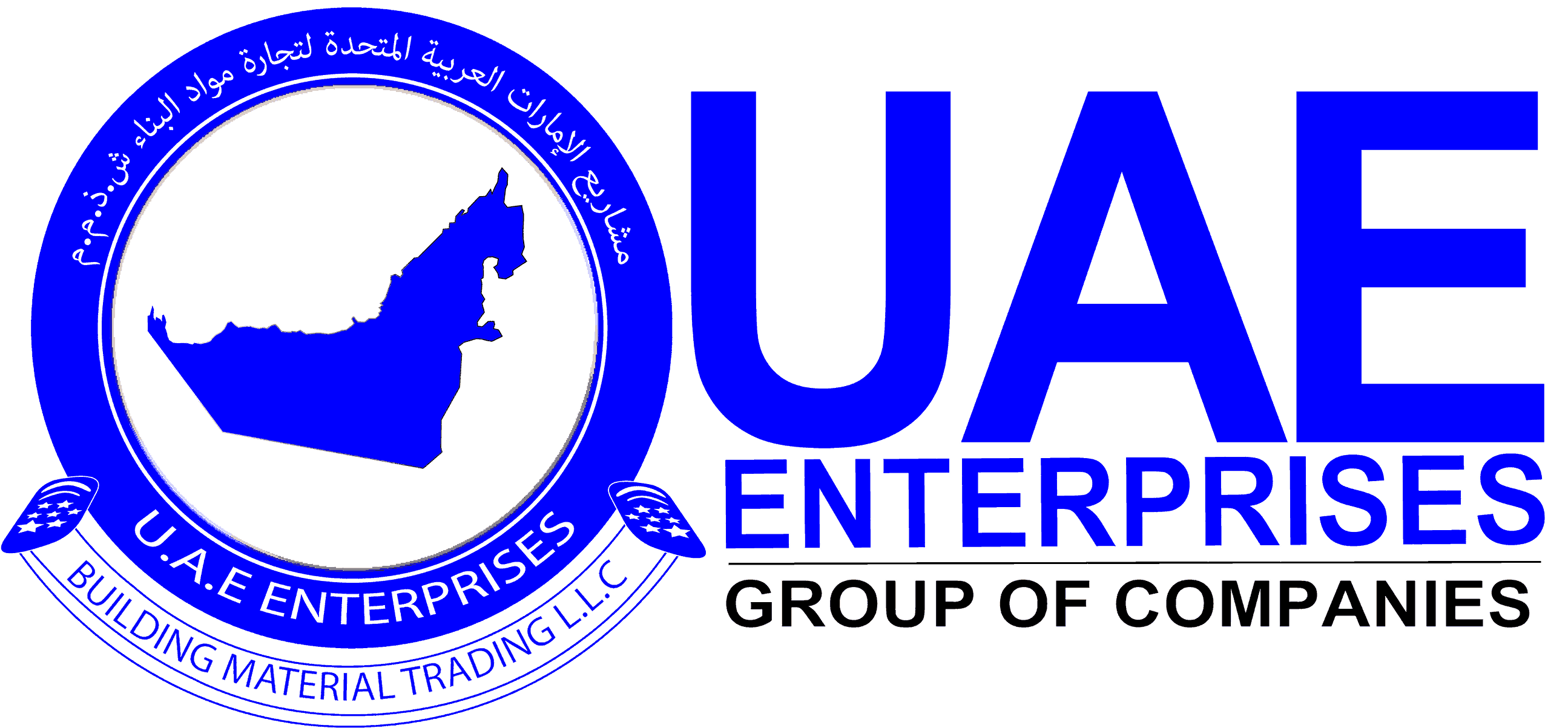Contact
Landline: (+971) 42821260
Fax: (+971) 4282 1006
(+971) 4282 7106
Email: contactus@uaeenterprises.com
Address
Head Office: - 8 Airport Rd - Garhoud - Dubai, United Arab Emirates.
Contact
Landline: (+971) 42821260
Fax: (+971) 4282 1006
(+971) 4282 7106
Email: contactus@uaeenterprises.com
Address
Head Office: - 8 Airport Rd - Garhoud - Dubai, United Arab Emirates.
Plywood is a material manufactured from thin layers or “plies” of wood veneer that are glued together with adjacent layers having their wood grain rotated up to 90 degrees to one another. It is an engineered wood from the family of manufactured boards which includes medium-density fibreboard (MDF), oriented strand board (OSB), and particle board (chipboard).
All plywoods bind resin and wood fiber sheets (cellulose cells are long, strong, and thin) to form a composite material. This alternation of the grain is called cross-graining and has several important benefits: it reduces the tendency of wood to split when nailed at the edges; it reduces expansion and shrinkage, providing improved dimensional stability; and it makes the strength of the panel consistent across all directions. There is usually an odd number of plies so that the sheet is balanced—this reduces warping. Because plywood is bonded with grains running against one another and with an odd number of composite parts, it has high stiffness perpendicular to the grain direction of the surface ply.
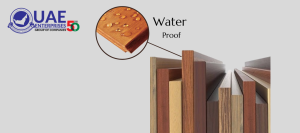
Smaller, thinner, and lower quality plywood may only have their plies (layers) arranged at right angles to each other. Some better-quality plywood products will by design have five plies in steps of 45 degrees (0, 45, 90, 135, and 180 degrees), giving strength in multiple axes.
The word ply derives from the French verb plier,[1] “to fold”, from the Latin verb plico, from the ancient Greek verb πλέκω.[2]
A brief description of these types of plywood is given below
Softwood plywood is usually made either of cedar, Douglas fir or spruce, pine, and fir (collectively known as spruce-pine-fir or SPF) or redwood and is typically used for construction and industrial purposes.[10]
The most common dimension is 1.2 by 2.4 metres (3 ft 11 in × 7 ft 10 in) or the slightly larger imperial dimension of 4 feet × 8 feet. Plies vary in thickness from 1.4 mm to 4.3 mm. The number of plies—which is always odd—depends on the thickness and grade of the sheet. Roofing can use the thinner 16-millimetre (5⁄8 in) plywood. Subfloors are at least 19 millimetres (3⁄4 in) thick, the thickness depending on the distance between floor joists. Plywood for flooring applications is often tongue and groove (T&G); This prevents one board from moving up or down relative to its neighbor, providing a solid-feeling floor when the joints do not lie over joists. T&G plywood is usually found in the 13-to-25-millimetre (1⁄2 to 1 in) range.
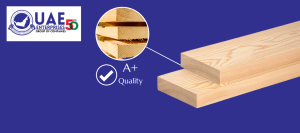
Hardwood plywood is made out of wood from dicot trees (oak, beech and mahogany) and used for demanding end uses. Hardwood plywood is characterized by its excellent strength, stiffness, durability and resistance to creep. It has a high planar shear strength and impact resistance, which make it especially suitable for heavy-duty floor and wall structures. Oriented plywood construction has a high wheel-carrying capacity. Hardwood plywood has excellent surface hardness, and damage- and wear-resistance.[11]
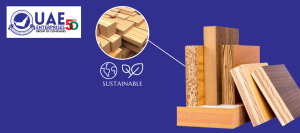
Tropical plywood is made of mixed hardwood species of tropical timber. Originally from the Asian region, it is now also manufactured in African and South American countries. Tropical plywood is superior to softwood plywood due to its density, strength, evenness of layers, and high quality. It is usually sold at a premium in many markets if manufactured with high standards. Tropical plywood is widely used in the UK, Japan, United States, Taiwan, Korea, Dubai, and other countries worldwide. It is used for construction purposes in many regions due to its low cost. However, many countries’ forests have been over-harvested, including the Philippines, Malaysia and Indonesia, largely due to the demand for plywood production and export.[12]
De Havilland DH-98 Mosquito was made of curved and glued veneers
High-strength plywood, also known as aircraft plywood, is made from mahogany, spruce and/or birch using adhesives with an increased resistance to heat and humidity. It was used in the construction of air assault gliders during World War II and also several fighter aircraft, most notably the multi-role British Mosquito. Nicknamed “The Wooden Wonder” plywood was used for the wing surfaces, and also flat sections such as bulkheads and the webs of the wing spars. The fuselage had exceptional rigidity from the bonded ply-balsa-ply ‘sandwich’ of its monocoque shell; elliptical in cross-section, it was formed in two separate mirror-image halves, using curved moulds.
Structural aircraft-grade plywood is most commonly manufactured from African mahogany, spruce or birch veneers that are bonded together in a hot press over hardwood cores of basswood or poplar or from European Birch veneers throughout. Basswood is another type of aviation-grade plywood that is lighter and more flexible than mahogany and birch plywood but has slightly less[citation needed] structural strength. Aviation-grade plywood is manufactured to a number of specifications including those outlined since 1931 in the Germanischer Lloyd Rules for Surveying and Testing of Plywood for Aircraft and MIL-P-607, the latter of which calls for shear testing after immersion in boiling water for three hours to verify the adhesive qualities between the plies meets specifications. Aircraft grade plywood is made from three or more plies of birch, as thin as 0.40 millimetres (1⁄64 in) thick in total, and is extremely strong and light.
Usually faced with hardwood, including ash, oak, red oak, birch, maple, mahogany, shorea (often called lauan, meranti, or Philippine mahogany, though having no relation to true mahogany), rosewood, teak and a large number of other hardwoods.
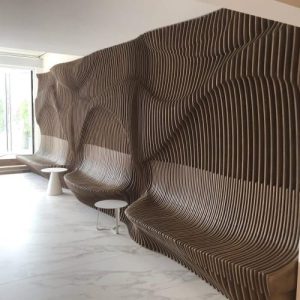
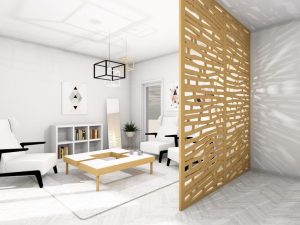
Flexible plywood is designed for making curved parts, a practice which dates back to the 1850s in furniture making.[citation needed] At 3⁄8 inch (9.5 mm) thick, mahogany three-ply “wiggle board” or “bendy board” come in 4 by 8 feet (1.2 m × 2.4 m) sheets with a very thin cross-grain central ply and two thicker exterior plies, either long grain on the sheet, or cross grain. Wiggle board is often glued together in two layers once it is formed into the desired curve, so that the final shape will be stiff and resist movement. Often, decorative wood veneers are added as a surface layer.

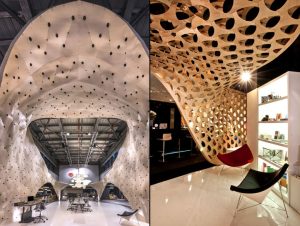
Marine plywood is manufactured from durable face and core veneers, with few defects so it performs longer in both humid and wet conditions and resists delaminating and fungal attack. Its construction is such that it can be used in environments where it is exposed to moisture for long periods. Each wood veneer will be from tropical hardwoods, have negligible core gap, limiting the chance of trapping water in the plywood and hence providing a solid and stable glue bond. It uses an exterior Weather and Boil Proof (WBP) glue similar to most exterior plywoods.
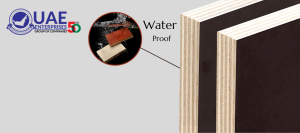
Other types of plywoods include fire-retardant, moisture-resistant, wire mesh, sign-grade, and pressure-treated. However, the plywood may be treated with various chemicals to improve the plywood’s fireproofing. Each of these products is designed to fill a need in industry.
Baltic Birch plywood is a product of an area around the Baltic Sea. Originally manufactured for European cabinet makers but now popular in the United States as well. It is very stable composed of an inner void-free core of cross-banded birch plys with an exterior grade adhesive. The face veneers are thicker than traditional cabinet grade plywood.
| Grade | Description |
|---|---|
| A | Face and back veneers practically free from all defects. |
| A/B | Face veneers practically free from all defects. Reverse veneers with only a few small knots or discolorations. |
| A/BB | Face as A but reverse side permitting jointed veneers, large knots, plugs, etc. |
| B | Both side veneers with only a few small knots or discolorations. |
| B/BB | Face veneers with only a few small knots or discolorations. Reverse side permitting jointed veneers, large knots, plugs, etc. |
| BB | Both sides permitting jointed veneers, large knots, plugs, etc. |
| C/D | For structural plywood, this grade means that the face has knots and defects filled in and the reverse may have some that are not filled. Neither face is an appearance grade, nor are they sanded smooth. This grade is often used for sheathing the surfaces of a building prior to being covered with another product like flooring, siding, masonry, or roofing materials. |
| WG | Guaranteed well glued only. All broken knots plugged. |
| X | Knots, knotholes, cracks, and all other defects permitted. |
| WBP | Weather and boil proof glue used in marine plywood. Designation replaced by EN 314-3. |
| Grade | Description |
|---|---|
| BB/CC | Face as BB, back as CC. BB as very little knots of less than 1/4 inches, slight discoloration, no decay, split and wormholes mended skillfully, matched colors, no blister, no wrinkle. Most popular choice for many applications like furniture, packing and construction. |
Typical end uses of spruce plywood are:
There are coating solutions available that mask the prominent grain structure of spruce plywood. For these coated plywoods there are some end uses where reasonable strength is needed but the lightness of spruce is a benefit, e.g.:
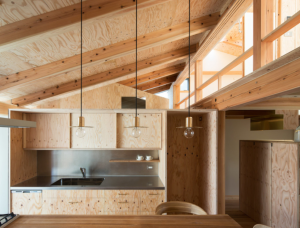
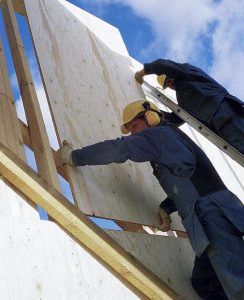
Phenolic resin film coated (Film Faced) hardwood plywood is typically used as a ready-to-install component e.g.:
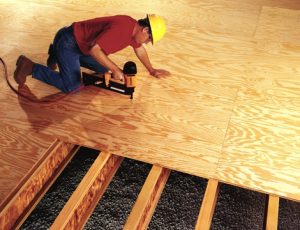
Birch plywood is used as a structural material in special applications e.g.:
Smooth surface and accurate thickness combined with the durability of the material makes birch plywood a favorable material for many special end uses e.g.:
Tropical plywood is widely available from the South-East Asia region, mainly from Malaysia and Indonesia.